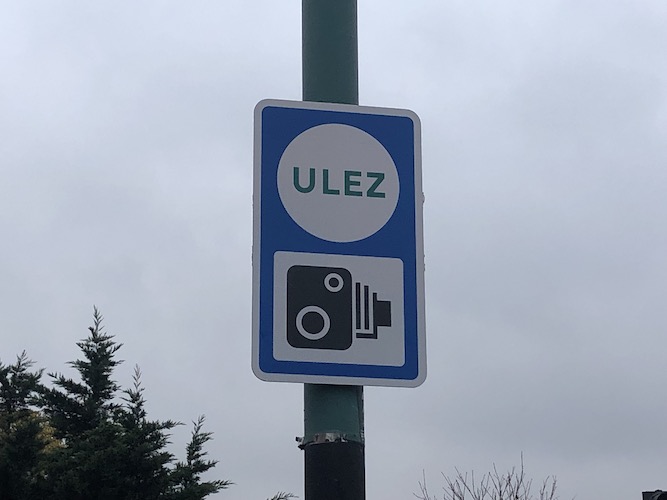Sadiq Khan is claiming success for his vastly-expanded Ultra Low Emission Zone (ULEZ) as a City Hall report on its first month’s effects says there has been a significant fall in the number of vehicles being driven within the zone that fail to comply with its air quality standards.
The report, compiled using Transport for London data, says 92 per cent of vehicles detected travelling within the ULEZ since its 18-fold enlargement on 25 October have been compliant compared with 87 per cent during the two weeks before its introduction.
City Hall is highlighting a more marked contrast with the 39 per cent compliance level in the Central London area covered by the Congestion Charge zone in February 2017 prior to the Mayor introducing a Toxicity Charge on the most polluting vehicles driven there in October of that year as a prelude to the launch of the original ULEZ in April 2019.
The number of non-compliant vehicles spotted by detection cameras within the expanded ULEZ during the first month is down by 47,000 according to the City Hall report, from 127,000 to 80,000, a fall of 37 percent. The total number of compliant vehicles seen was up by 35,000 to 872,000.
Since the expansion there have been an estimated 11,000 fewer vehicles overall driving with the ULEZ each day the report says, a reduction of one per cent. It notes that post-launch traffic patterns will take some time to fully emerge.
The report also says that the ULEZ compliance rate on roads at the boundary of the zone has been 88 per cent, up four percentage points since the scheme came into effect, and 82 per cent outside the zone in all, up two points. “This demonstrates the wider air quality benefits of the scheme beyond its boundary,” the report says.
Owners of non-compliant cars, vans and motorcycles travelling within the ULEZ are charged £12.50 a day and lorries and coaches £100 a day. Penalty charges of £160 a day are imposed for non-payment, reduced to £80 if paid within 14 days.
The report has been welcomed by climate charity Possible whose head of car-free cities Hirra Khan Adeogun said it “demonstrates the clear benefits of taking action to reduce the dangers of congestion, pollution and collisions from cars” and urged the Mayor to build on progress with a more ambitious road-pricing system.
On London is a small but influential website which strives to provide more of the kind of journalism the capital city needs. Become a supporter for £5 a month or £50 a year and receive an action-packed weekly newsletter and free entry to online events. Details here.


I am dumbfounded by the fact the ULEZ is such a success. I live in Haringey one mile inside the magical 406. North Circular UlEZ, The traffic has been nose to tail on all local residential roads in the last few days. These are the days when people have been instructed to work from home. This seems to show that most of the traffic comes not from people joyriding round the sights of London but using roads to get to and from work. Is that not what roads were built for? Round here – where we are about to be incarcerated in a LTN to add to our woes – some young parents want no cars so their kiddies can play in the street. So strange when all these parents live in houses with gardens!
Funny thing, success.
* Reducing older polluting vehicles: mostly a success. Not as much of a success if as it could have been if the scrappage options had been more generous to get residents vehicles off the road, and there is still the issue of trains, cranes, trailer refrigeration, and exempted showmans vehicles and heritage vehicles (petrol, diesel, and steam).
* Paying for the capital works to support enforcement in a sensible timeframe?: probably much less of a success, too few vehicles being charged
* Actually improving air quality?: Too soon to know, needs several months or a years worth of consistent measurement at multiple points across the zone, especially some black spots not previously covered by T-charge.